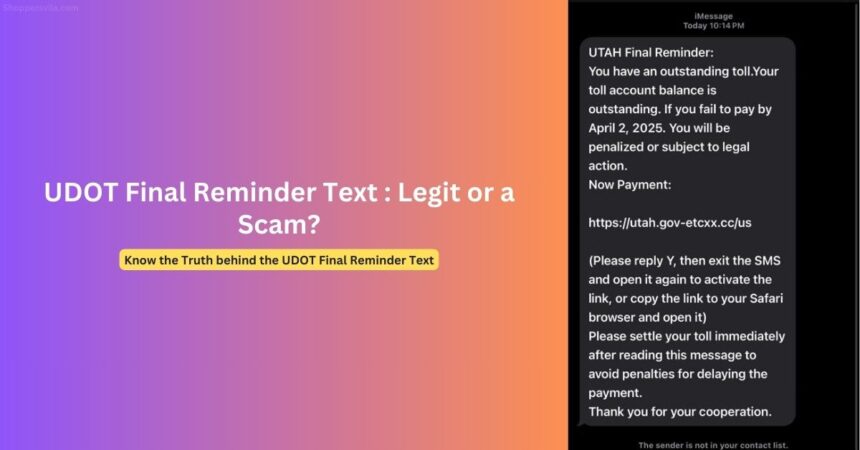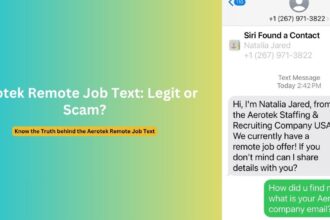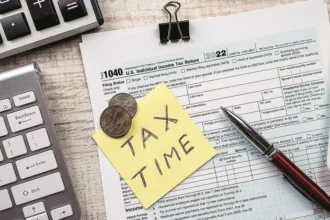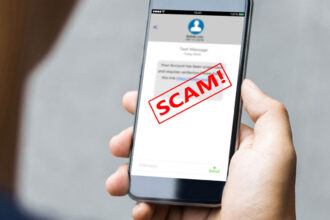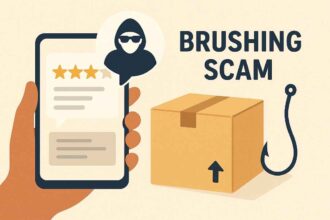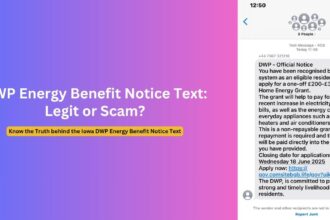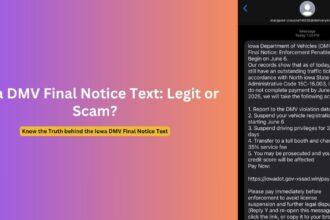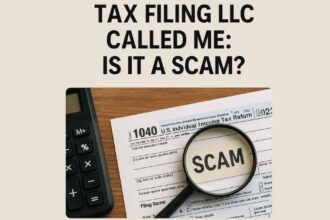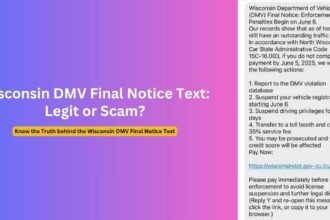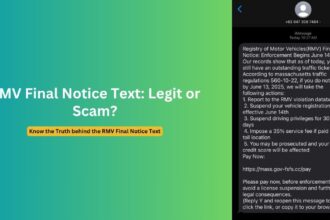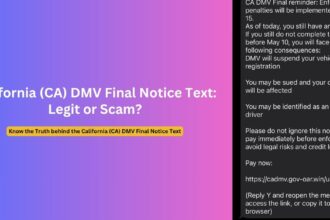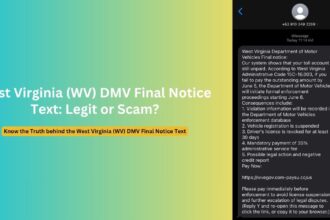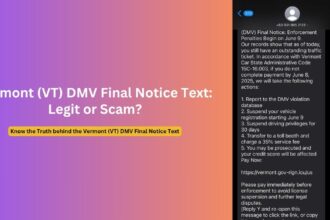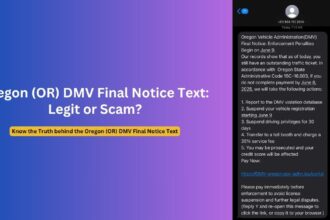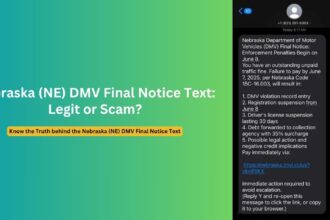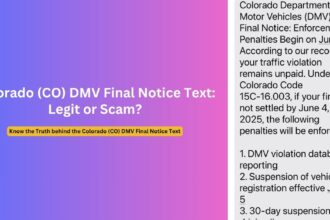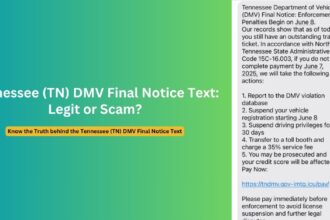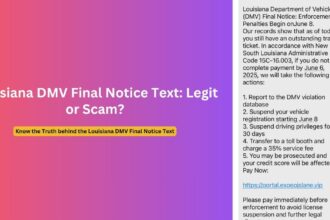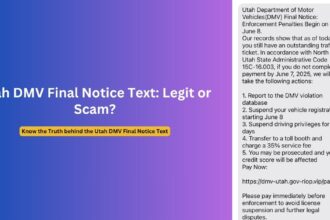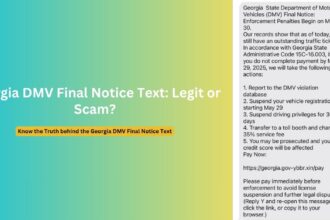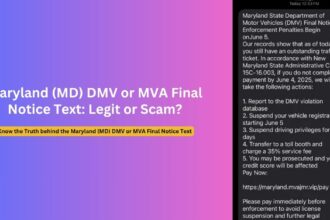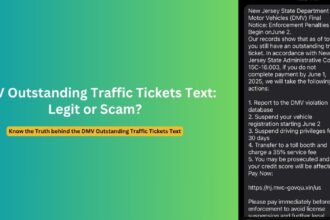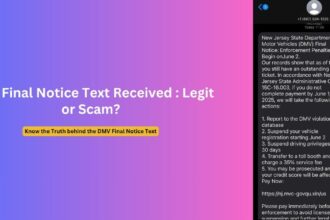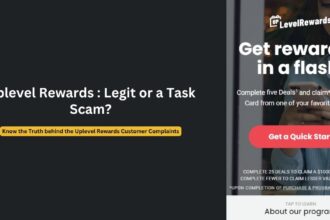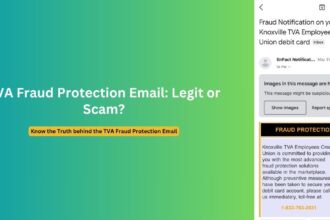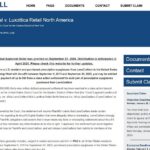A wave of fraudulent text messages claiming to be from the Utah Department of Transportation (UDOT) has hit residents across the state, demanding payment for non-existent toll violations. These messages are part of a sophisticated nationwide “smishing” scam that has already triggered warnings from federal agencies and resulted in thousands of complaints. With scammers becoming increasingly convincing in their tactics, understanding how to identify and avoid these scams has never been more important.
The Overview of the UDOT Toll Scam
The scam typically begins with an urgent text message claiming to be from UDOT or a related toll service. These messages inform recipients they have an outstanding toll balance that requires immediate payment to avoid penalties or legal action.
One version reads:
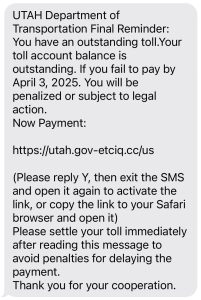
UTAH Department of Transportation Final Reminder: You have an outstanding toll. Your toll account balance is outstanding. If you fail to pay by April 3, 2025, you will be penalized or subject to legal action.
Another version is:
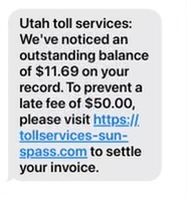
Utah toll services: We’ve noticed an outstanding balance of $11.69 on your record. To prevent a late fee of $50.00, please visit https:// tollservices-sun- spass.com to settle your invoice.
What makes these messages particularly deceptive is their professional appearance and creation of urgency. They often include:
- Official-sounding agency names like “Utah Toll Services” or references to “FastTrak Lane”
- Specific dollar amounts (commonly $11.69) to appear legitimate
- Threat of substantial late fees (typically $50.00)
- Links to convincing but fraudulent websites with domains that mimic official government sites
- Deadlines creating a sense of urgency
The fraudulent links direct victims to sophisticated fake payment portals designed to harvest credit card information, banking details, and personal data that can be used for identity theft or financial fraud.
Why So Many Utahns Are Receiving These Messages
What’s particularly unusual about this scam in Utah is that the state has very limited toll infrastructure. As one Reddit user commented, “This one always makes me laugh because we don’t even use E-ZPass in Utah.” Another noted, “We only have 1 toll in Utah in the middle of nowhere.”
The scammers aren’t targeting people based on actual toll road usage. Instead, they’re casting a wide net, sending thousands of messages to random phone numbers hoping that recipients will panic and pay without verification. The scam exploits several factors that make it surprisingly effective:
- The digital tolling transition: As more states move to cashless toll systems, people are becoming accustomed to electronic toll collection
- Geographic confusion: Many recipients aren’t familiar with their state’s toll infrastructure
- Fear of legal consequences: The threat of penalties or legal action creates immediate anxiety
- Increasing comfort with mobile payments: People regularly conduct financial transactions on their phones
The FBI’s Internet Crime Complaint Center (IC3) logged over 60,000 complaints related to these types of scams in 2024 alone—a number experts believe represents only a fraction of actual incidents.
How to Identify a Fraudulent UTAH Department of Transportation Toll Texts
UDOT has explicitly confirmed, “This is a scam,” and stated unequivocally: “UDOT does not send text messages requesting payments of tolls.” This official statement provides the clearest indication that these messages are fraudulent, but there are other red flags to watch for:
1. Suspicious Domain Names
Legitimate government websites use specific domains. Utah government sites use “.gov” domains (like udot.utah.gov) without additional characters. The scam messages typically use domains like:
- utah.gov-etciq.cc/us
- tollservices-sun-spass.com
Notice how the first example tries to incorporate “utah.gov” but actually uses the domain “gov-etciq.cc”—a clear sign of deception.
2. Unusual Instructions
Some scam messages include strange instructions such as “Please reply Y, then exit the SMS and open it again to activate the link, or copy the link to your Safari browser and open it.” These unusual steps are designed to bypass spam filters or to further convince victims the message is legitimate.
3. International Origins
Many recipients report receiving these messages from international numbers, particularly from the Philippines. As one Reddit user noted, “They’re sending texts from out of the country too. Silly scammers.” Another commented, “I’ve received like 20 of these texts, at this point, and they’re almost always from a number in the Philippines.”
4. Email-Based Text Messages
Some variations of the scam come from email addresses rather than phone numbers. A Reddit user observed, “They are especially scammy because they come from an email address not a number.” Some recipients reported absurd sender addresses like “gregandersonxx4958@easybait.”
The Nationwide Scope of Toll Scams
While Utah residents are currently experiencing a wave of these scam messages, the problem extends far beyond state lines. Similar scams have been reported across the country, with messages claiming to be from various state transportation departments and toll authorities:
- Vermont Department of Transportation (VDOT)
- New York State Thruway Authority
- Massachusetts Department of Transportation
- Florida SunPass
- California FastTrak
The scammers adapt their messages to target specific regions, making them appear more credible to local recipients. As one Facebook commenter noted, “They were doing it in California few months back. I got one and went directly to the website to confirm it. There was a warning on the front page about it.”
This geographic customization makes the scam particularly effective, as it creates the impression of legitimacy by referencing local agencies familiar to the recipient.
How to Protect Yourself from UTAH DOT Final Reminder Toll Scams
If you receive a text message about unpaid tolls, follow these steps to protect yourself:
1. Never Click Links in Unsolicited Messages
The most important rule is to avoid clicking any links in unexpected text messages, even if they appear to be from a government agency. Clicking these links can lead to malware installation or direct you to a phishing site designed to steal your information.
2. Verify Through Official Channels
If you’re concerned about a potential unpaid toll, contact the appropriate transportation agency directly through their official website or phone number—never through the contact information provided in the suspicious message.
For Utah residents, UDOT can be reached through their official website (udot.utah.gov) or by calling their customer service line. Remember that legitimate toll violations are typically sent via postal mail, not text messages.
3. Report the Scam
Forward suspicious text messages to 7726 (SPAM), which helps carriers identify and block scam numbers. You can also report the scam to:
- The FTC at ReportFraud.ftc.gov
- The FBI’s Internet Crime Complaint Center (IC3) at IC3.gov
- Your state’s attorney general’s office
4. Check Your Accounts
If you’ve already clicked a link or provided information, monitor your accounts closely for unauthorized charges. Consider:
- Placing a fraud alert on your credit report
- Changing passwords for any compromised accounts
- Contacting your bank or credit card company immediately if you shared financial information
5. Enhance Your Digital Security
Take proactive steps to strengthen your overall security:
- Enable spam filters on your phone
- Set up multi-factor authentication on sensitive accounts
- Keep your operating system and apps updated
- Consider using a password manager for stronger unique passwords
Who Is Most Vulnerable to These Scams?
While anyone can fall victim to these sophisticated scams, certain groups may be at higher risk:
Elderly individuals are often specifically targeted. As one Reddit user mentioned, “Please let your aging parents and grandparents know about this. They are most at risk.”
New drivers may be unfamiliar with how toll systems work. One comment noted, “My daughter got that text a few weeks ago, she’s had her license less than a year.”
People who’ve recently traveled might believe they incurred a legitimate toll. One user shared, “I got one today for missing a toll. Which is weird cuz I work from home but I did drive today.”
Even cybersecurity professionals acknowledge the increasing sophistication of these scams. One Reddit commenter who works in cybersecurity noted receiving the scam message despite their expertise.
The Future of Toll Scams and Digital Vigilance
As more transportation systems move toward digital payment methods, we can expect scammers to continue refining their tactics. The transition to cashless tolling, while convenient for drivers, creates new opportunities for fraudsters to exploit.
Staying ahead of these scams requires ongoing education and awareness. UDOT and other transportation agencies across the country are working to alert the public about these fraudulent messages, but ultimately, personal vigilance remains the best defense.
Remember the golden rule: government agencies do not typically initiate contact through text messages regarding payments. When in doubt, verify independently through official channels, and never click suspicious links.
By staying informed and cautious, Utah residents can protect themselves from becoming the next victims of this widespread and evolving scam.
